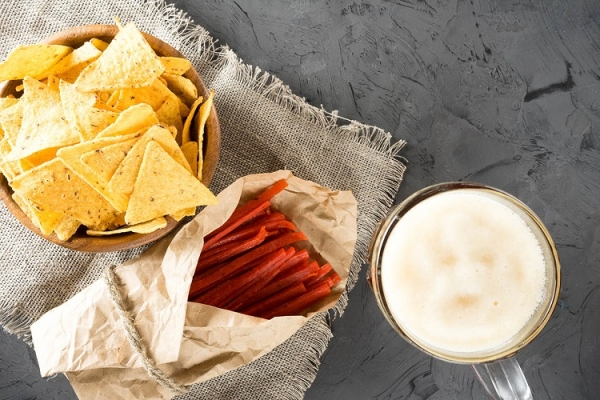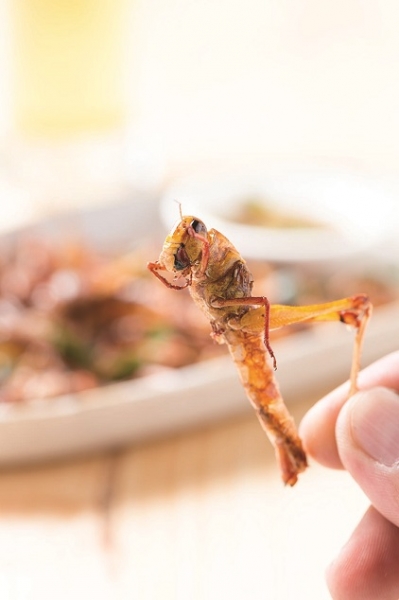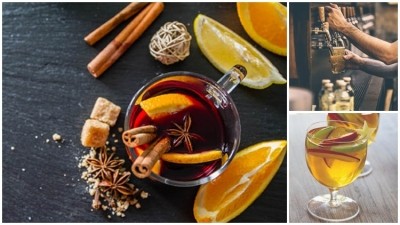What are the latest trends in bagged snacks?

The days of putting crisps and nuts in a bowl on the bar are long gone now as punters seek something a little more upmarket, perhaps even something that’s going to have less of an impact on their waistline.
Pork scratchings have always been a pub favourite, but even this classic bar snack has upped its game in recent years, drawing in Michelin-starred chefs to give it a little pizazz.
In fact, bagged pub snacks was an area esteemed pub chef Tom Kerridge couldn’t resist moving into as he, along with RayGray Snacks, launched a range of pork scratchings in March last year.
Pork Crunch is made from 100% British pork rind and includes flavours such as British Sea Salt, Pickled Green Chilli and Smoked Paprika. The rind is sourced entirely from Packington pork – a cross breed of the Large White, Landrace and Duroc pigs.
Packington pigs are free range and reared to the highest welfare standards with the production systems being focused on achieving the best conditions and welfare for the animals.
All the pigs are reared to RSPCA Assured standards, and are annually audited by the farm animal welfare assurance scheme. Kerridge highlights the importance of farming and how operators go about getting their ingredients.
He says: “British pig farming and animal husbandry are incredibly important and the highest levels of care are reflected in the excellence of this finished product.”
Wider consumer trends
Looking outside the pub trade itself and into wider consumer trends, popcorn and sweets are popular snacks during the weekend, according to Nielsen’s The Power of Snacking report.
The report also reveals the traditional view that snacking decisions are unplanned and impulsive is no longer the case, with purchases now much more diverse and complex.
Research analyst Kantar Worldpanel says snacks are still a lucrative area for pubs to tap into, but consumer habits are changing and operators need to innovate to keep and find customers in this evolving sector. Two big factors affect how consumers snack in the UK: health concerns and, more surprisingly, technology. The snack food industry is now competing with smartphones for attention in moments of boredom, pain, fatigue or self-indulgence.
There’s also space to innovate around the new trends in health, as consumers opt for all-round nutrition as opposed to low-calorie or ‘diet’ snacks.
Global head of Kantar TNS Qualitative Anjali Puri explains that operators and snack producers need to realise that while health is still a trend in the market, price is also ranked as important by consumers.
She adds: “To reclaim some of the airtime lost to today’s customers’ lightning-paced lives and addiction to technology, brands must understand the exact drivers that prompt them to pick up a bite to eat.
“They also need to understand that low-calorie is not what health-conscious customers are necessarily looking for and that price is still a key factor in their decision making.”
Demand for bolder flavours
One healthy snacking brand has extended its range of gluten-free and vegan hummus, lentil and quinoa chips with the addition of six new flavours.
New variants for Eat Real include Chilli Cheese and Sour Cream & Chive Hummus Chips; Mango and Mint Lentil; and Paprika and Sweet Chilli. These have been launched in a bid to meet growing consumer demand for bolder flavours.
Eat Real director of commercial sales and marketing Debbie King says: “The shift towards healthier and ‘free-from’ snacking continues apace, with many of today’s consumers now seeking out healthier snacks in preference to more traditional products.
“The consumer appetite for healthier snacking has grown rapidly in line with the demands of busy, on-the-go lifestyles and with health and wellness now topping their agendas, people are much more mindful about what they eat.”
From health to international cuisine, Indian snacks brand Cofresh says there is a growing call for global ‘taste adventures’ and, in response, it has as extended its core range of savoury Asian mixes with two new flavours.
Debbie King, who is also director of commercial sales and marketing at Cofresh, says: “Khatta Meetha is a traditional Indian snack, which we have brought up to date to meet the demand for spicier, more interesting food.
“As consumers’ taste buds get bolder, they are seeking out ever more ethically authentic and exciting flavours.”
The Indian snack brand has unveiled its Chilli and Lemon Bombay Mix – a mix of savoury noodles, peas, peanuts and lentils with a spicy flavour.
King adds: “By taking our chilli and lemon flavour and applying it to an Asian mix, we are targeting the new generation and Millennials, who are constantly looking for a new take on traditional snacks.”
Taking inspiration from even further afield, the future could hold creepy crawlies being added to the snack offer.
Eating insects
In December last year, digital food service experts Food Spark predicted the trend of eating insects was here to stay. However, if this is something pubs are going to consider, they need to ensure insects are introduced to menus as a ‘normal’ addition.
So, instead of seeing the shape of a cricket on their plate, the food could be made from ground-up crickets. That way, diners get the flavour and nutrition without any sensationalism, and makes the cricket flour easier to introduce into regular food.
This approach is something one supplier suggests to encourage customers into the insect market. However, he also gives tips on how bugs can be used as bar snacks.
Eat Grub co-founder Shami Radia says: “Insects are eaten all around the world because they taste really good, are very nutritious and are environmentally easy to farm.
“In the bar and pub arena, it works well because people are naturally a bit more willing to try new things, partly because they have had a couple of drinks.
“Let’s be honest, if you are at a table and you’ve had a beer or a glass of wine, you might be a bit more willing to try something like this for the first time.
“In those environments, you will always get those kinds of people who are a bit more adventurous and up for trying something different.
“You will get other people who are waiting to see the reaction from the people who dive in and try them first.”
Radia also outlines how pubs who want to stock insect snacks can showcase them in the same way other snacks are displayed.
He adds: “There are various ways grub snacks can be presented: in the packet like peanuts, or in a large Kilner jar, like wasabi peas are kept on the back bar.”
While the snacking market has moved on from ‘traditional’ bites, keeping classics at the heart of the offer but adjusting it to current trends can mean customers’ interest is still piqued.









